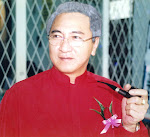
by Margo Varadi Jul 28th 2009 2:45AM
Of all the cancers, lung cancer is considered the number one killer in terms of mortality, says Dr. Stephen Lam, a Vancouver respirologist and chair of the Lung Tumour Group at the BC Cancer Agency.
According to him, some 23,500 new cases are projected for Canada in 2009. The reason lung cancer is so devastating is because it is often caught too late. That's why the survival rate is currently an abysmal 16%. There are few survivors able to lobby for the cause.
Here Dr. Lam talks about lung cancer, how to identify it and what causes it:
Q: Why aren't we catching lung cancer early enough?
A: When lung cancer is small, it doesn't produce any symptoms. By the time the patient shows symptoms, goes to see their family doctor and gets an x-ray usually the cancer is quite big. That means it's usually spread outside the lung and it's not curable.
More after the jump.
Q: We use mammograms to screen for breast cancer and pap smears to screen for cervical cancer, why aren't we screening earlier for lung cancer?
A: The technology is very good; we can pick up very small cancers. Because the lung is an internal organ, the detection is more extensive in terms of the cost of the CT scan or the bronchoscopy. Also the CT scan is very sensitive so not every nodule or shadow that we see on the CT scan is cancerous. In fact, the majority are not cancerous. So then we have to do a follow up investigation. That's where the time and the cost come into play.
Q: Is there a specific profile for someone who is most likely to get lung cancer?
A: It's usually people in their fifties who have smoked thirty years or more. In Canada about 90% of people with lung cancer are smokers and about 10% have never smoked. Other factors include a family history of lung cancer.
Q: Is there a genetic marker for lung cancer?
A: There are a couple of genes that have been identified. There's a region in chromosomes 6q and 15q that are related to lung cancer. If you have immediate family members who've had lung cancer, the risk of lung cancer is higher.
A: There are other occupational and environmental factors that could cause lung cancer. For example, in Asian women we suspect things like cooking oil particularly grape seed and soybean can result in higher incidence of lung cancer. When you burn them at high temperatures by, say, frying food in a wok, they become carcinogenic. In Asia, 30 to 50 percent of lung cancer cases have never smoked and the majority are women.
Some exposure to minerals like arsenic, cadmium or nickel can also induce cancer. People working in a copper or nickel refinery are at higher risk of lung cancer. Indoor radon gas is known to be a carcinogen. Depending on the geography of where we live, the environmental radon level can be higher or lower. In BC, the interior has a higher radon levels compared to Vancouver.
A: Other than avoiding exposure to tobacco smoke, there's nothing you can do. Second hand smoke increases the risk of lung cancer by about 20%.
A: Usually a cough is the commonest symptom. Some people who have had a smoker's cough for a long time might not even notice. Coughing up blood, breathing problems and/or chest pain are also possible early signs.
Q: What should people do if they have these symptoms?
A: They should go and see their family doctor to get it checked out. If they have symptoms, they should undergo routine clinical diagnosis.
*This interview has been condensed and edited.


.jpg)




No comments:
Post a Comment